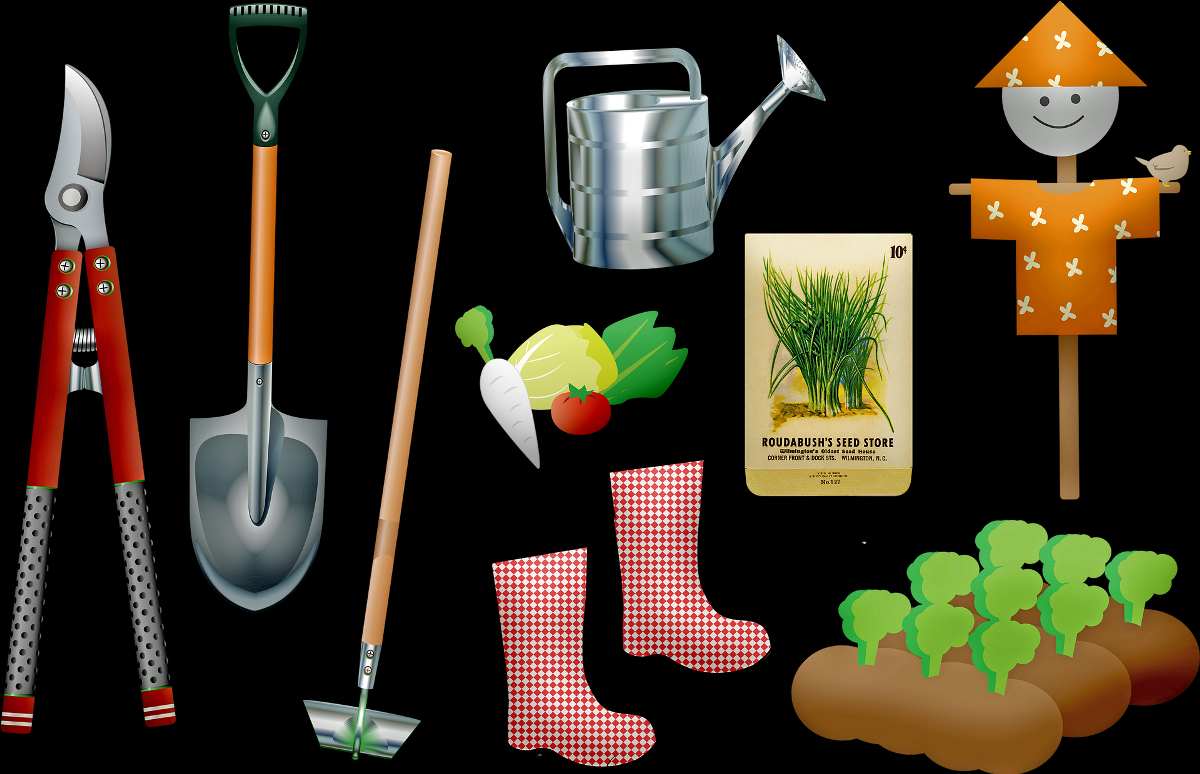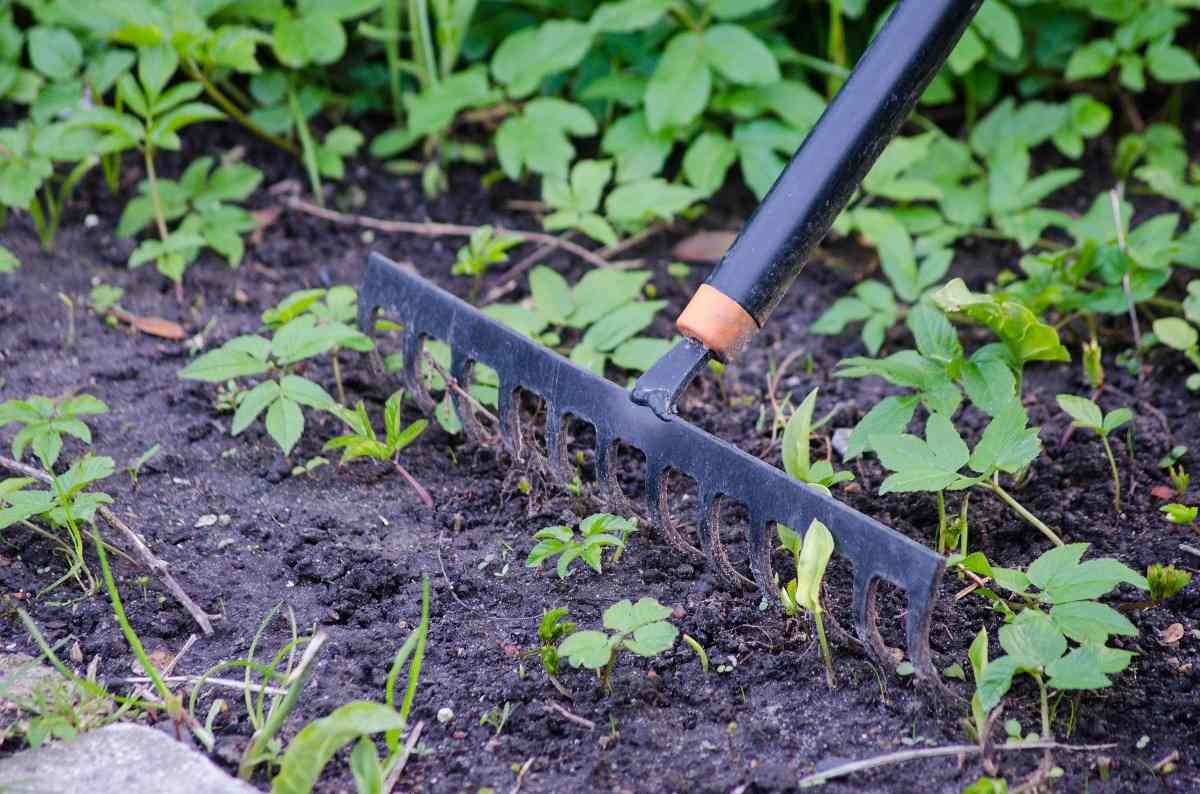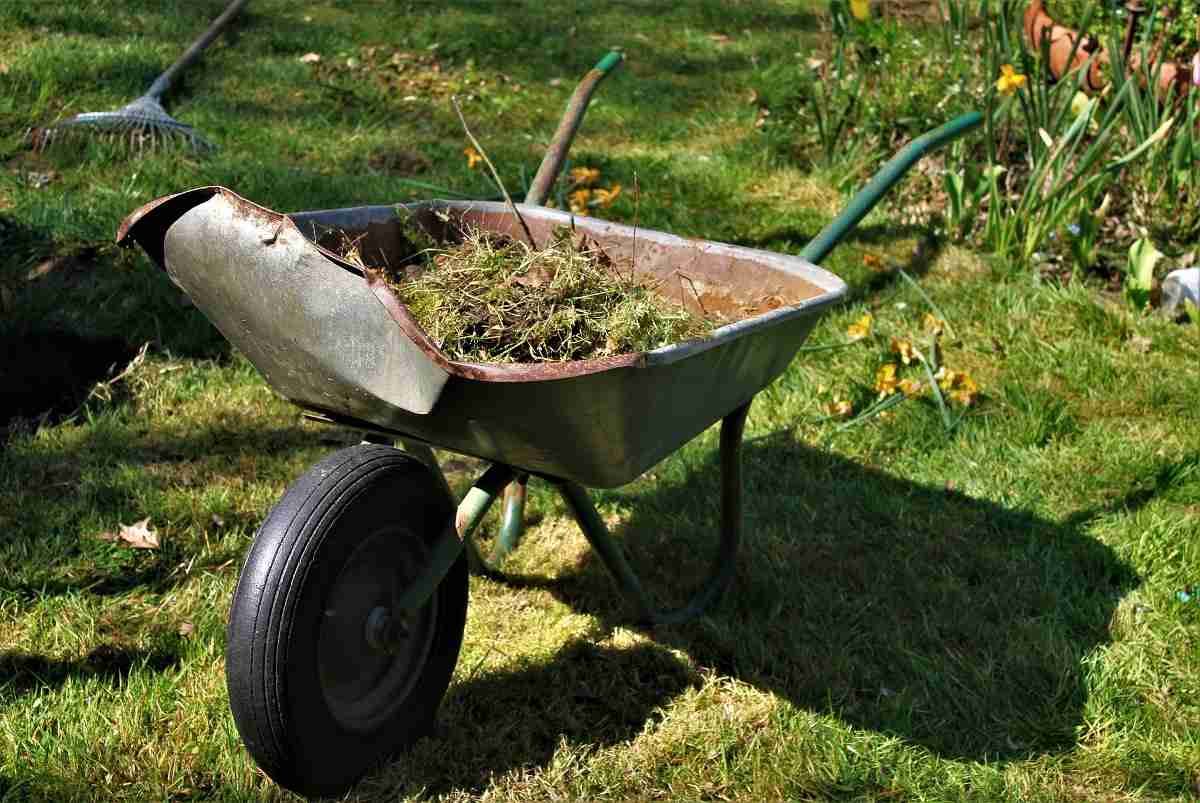Introduction to types of gardening tools and their uses
Gardening tools help us to carry out our work easily and also saves time and energy. The basic gardening task starts with digging the soil, getting ready for plantation, watering, harvesting, moving debris and making compost, etc. Purchase good quality gardening tools because they support longer and they don’t bend or break. Choose the best gardening tools that suit you for handling and makes you feel comfortable.
When it comes to cultivating a space in your yard, having the essential tools ready in the shed or garage will not only come to your advantage, but it will also be of great benefit to your garden. However, if you’re a novice gardener, you can be overwhelmed by the variety of planting tools available in the market. Although there’s a wide range of them to add to your collection, you need to determine the best ones worthy of your investment.
If you’re just starting the world of gardening, it’s a good idea to familiarize yourself with some of the most basic types of gardening tools so you have everything that you need to grow a beautiful garden.
Different types of gardening tools and their uses
Following are the different types of gardening tools explained with their uses:

Garden Hand Trowel
One of the best gardening tools you shouldn’t forget to add in your collection is a hand trowel. This device is a must-have, especially for beginners and urban gardeners. Ideal for transferring dirt into pots and planting seedlings, it will be more accessible if you dig soil or transport plants from your vegetable garden using a hand trowel.
You can use a trowel for digging out areas for plants and flowers as well as refilling the holes when you’re finished. They’re also ideal for digging out any weeds that have encroached on your garden plots. You can use one for a little edging work from time to time – there may be more specialized gardening tools for this, but they’ll do at a pinch.
Use garden trowel for:
- scooping and moving soil
- loosening planting soil
- digging holes for planting
- planting seeds and bulbs
- replanting and dividing plants
- weeding
- digging out deep-rooted plants
- harvesting root vegetables
Secateurs
Also known as a pruning shears, pruners or clippers, a garden secateurs is a very useful hand tool around the garden. You will need it for trimming and shaping plants and shrubs and for removing dead growth. A high-quality secateurs will last a very long time, stay sharper for longer, be able to take thicker branches, and be more comfortable to use, so it is worth investing in a good one.
Secateurs which look similar to scissors are used to remove dried and damaged leaves. Pruning helps in preventing wastage of nutrients and improves plant growth. Pruner can replace the saw in container gardening.
Use secateurs for:
- trimming small branches
- cutting stems
- deadheading flowers
- cutting twine or plant ties
Gardening Hose or Watering Can
You will need some device or container for watering your plants. If you have just a few plants in pots, then a pitcher or usual water bottle might be sufficient when you are just starting a garden. Water can is a handy thing to have because it can be used not only for watering but also for deck or patio cleaning – to rinse off the pollen, dirt, or debris.
Watering your plants and the entire garden is a must. For some urban gardeners, a watering can do the trick. But if you have a yard, it will be best to water your plants with a garden hose. If you’re worried about wasting any water between your garden beds, a spray nozzle will be a perfect addition to the hose. In this way, you will be able to control the water pressure.
Lopper
When you need to prune items above your head and don’t want to put yourself in danger by standing on a ladder to get the work done, you need to buy a lopper. These have long handles and strong blades that can cut through trees and vines that are under 2.5 inches in diameter. Their long handles make them easy to use over your head, but you do have to be careful that you don’t drop any branches on yourself. Sharp blades are key, so keep the blades oiled and cleaned or you will be frustrated when trying to use your loppers.
Garden Gloves
Some people love the feel of the dirt in their hands – it just kind of makes you feel alive. Even those who don’t mind getting our hands dirty still need a good pair of gardening gloves. Digging in the dirt with a hand shovel may not seem like the hardest chore, but after a few hours of it, your hands will start to feel it. If you want to avoid unwanted blisters a pair of gardening gloves is something you should seriously consider.
This underrated gardening tool may not be the first thing that will come to your mind, but garden gloves are essential as they protect your hands against dirt and injury. If you have to deal with thorny branches or prickly plants, gloves will protect your hands and wrists from scratches, scrapes, and splinters. Thorns and splinters are as annoying and uncomfortable as they are preventable with a good pair of gardening gloves.
Auger
When you’re going to be planting shrubs or trees or simply need a hole for a fence post, you will want to grab an auger. These are devices that drill into the ground instead of relying on the user to force them into the ground. The result is a hole that has the material inside removed and is ready for planting.
Garden shovel
This is one of the best types of gardening tools for every gardener. A shovel is a prerequisite for most jobs around the garden, particularly those that include digging and the removal or addition of loose gardening materials such as compost, fertilizer, mulch, soil, etc. Whether you’re scooping away weeds or you’re spreading on mulch, digging a deep hole, or filling a bed with compost, a high-quality shovel will be of great value to you.
Long-handled, round pointed shovel used to move soil and compost; digging holes for trees and bushes; transplanting; cutting through sod to break ground. Probably one of the most indispensable tools in the gardener’s shed.
Garden shovel with a round point can be used for:
- digging soil
- turning soil
- moving soil
- spreading compost
- transplanting and dividing plants
- planting bushes and trees
- cutting sod
- making trenches
- edging
Digging Spade
Spade has a long handle and flatter blade than a shovel; used to dig planting holes; severe invasive roots; designed for digging in the unprepared ground to improve drainage or to dig holes for larger shrubs and young trees. It also works well for digging up plants that you’re transplanting.
Some gardeners may think that having a digging shovel is already enough for drilling. Little did they know that a garden spade can also be extremely helpful in the garden bed!
No gardening tool kit is complete without one! You will need it for digging tasks, as well as edging beds and lawns, transplanting, dividing shrubs, trenching, and lots more.
Pruning Saw
These saws are great for cutting through larger shrub branches. They do a great job of cutting through greenwood if they have a straight blade, while you will want to use a curved blade to cut through larger branches. Make sure you get one with a curved handle, as this will make the tool much easier to use.
If you want to make sure that your grass is always level and neat but have space in your yard where you can’t use a lawnmower or weed eater, then you will need grass shears. These tools have long blades and are effectively a pair of powerful outdoor scissors. They can be used to trim around trees or shrubs without causing any damage, and are best used after you have tried to mow or weed-eat, as they are manual and will take a very long time to use.
Garden Hoe
A hoe is another gardening tool used for weeding. A sharp blade works better and is easier to use. Always keep the blade sharp and hoe the weeds in the evenings because this prevents the weeds from germination.
You will find it highly useful when preparing beds for planting and weeding. They allow you to quickly dig a shallow trench in the soil that’s ideal for planting seeds just below the surface.
A garden hoe is used for:
- weeding without the need to bend
- digging and breaking soil
- scraping and clearing the soil
- as a guide for row making
- hilling plants (like potatoes)
- harvesting root vegetables
Fork
There are two types of forks. They are digging fork and compost fork.
Digging fork is used for breaking the firm surface of soil, harvesting root crops, and breaking clumps in soil. If you’re planning to dig into rocky or extremely compacted soil, a digging fork is your best bet! Not only this gardening tool can lessen the strain on your body and reduce the back-breaking work, but it also can loosen up the soil easily!
Compost fork is used for moving composts, mulches, manure, straw, and other organic manure in your garden.
Prefer slightly higher weighted digging fork because it helps in breaking soil lumps easily. Select lower weighted Compost fork because it becomes easy for lifting and throwing organic matter.
Rake
This is one of the best types of gardening tools for everyone who works with plants. A rake will allow you to remove stones, rocks, and clogs from the ground before planting. It helps in clearing the dried leaves and leveling the ground by removing the pebbles. Materials like plastic, wood, and metals are used in making supporting handles. Use long handle rakes for lawn and smaller handle rakes for container gardening. Leaf rakes are one of the most commonly used garden equipment as it can serve various purposes.
In case if you miss this: Vegetable Planting Chart in India.

However, when it comes to your overall garden, a bow rake can be the best option. You can still use this tool to clear the leaves or even spread mulch. Also, if you’re looking for a perfect tool that can help you with leveling soil or breaking up some hard garden dirt in the springtime, a bow rake can do the magic.
Use gardening rake for:
- breaking soil clumps
- smoothing the soil
- collecting debris
- raking fallen leaves
Wheelbarrow
This is one of the best types of gardening tools every gardener must-have. A wheelbarrow greatly eases the burden of moving awkward and heavy gardening materials around your garden. You can use it to move dirt, compost, and even stacks of leaves smoothly across your property.
When you’re digging out new gardens or taking care of a weed infestation you’re bound to have a lot of waste material. All of that has to go somewhere and even if you have a backyard compost heap you still have to get it there.

You can save a lot of time and effort with a good quality wheelbarrow – just make sure those tires are properly inflated before you get to work! If you are growing vegetables in containers or small gardens, prefer a plastic wheelbarrow to fulfill your needs.
Use wheelbarrow for:
- heavy plants
- pots
- soil
- rocks and pavers
- edging
- bricks
- garden tools and equipment
- trimmed branches
- weeds and fallen leaves
Garden Weeder
This is one of the best types of gardening tools one must-have. This is a tool that is perfectly designed for weeding and removing smaller roots that get in your way when you are trying to plant. The strong head is forced into the ground and easily cuts through roots. The shaft of the tool has a slight bend to it, which makes it easy to lever this tool back and forth and to pull up anything that is in your way when planting.
If you would like to tackle weeds, but you don’t want to pollute your garden with harmful chemicals the solution is a simple weeder. These are small hand tools with a forked end that’s ideal for digging individual weeds and removing them by the roots.
Garden Knife
Ideal for cutting and trimming strings and fruits and vegetable plants, a garden knife makes a convenient tool for beginners. Hori Hori garden knife, for example, is popular among gardeners.
Garden knife is used for transplanting, grafting, opening fertilizer bags, cutting strings, harvesting, pruning and dividing branches. Hori Hori knife is used in digging, pruning, etc in container gardening. The Hori Hori tool acts not only as a knife, but also a piece of digging equipment saw, or measuring device for planting bulbs. Some gardeners are using it as a weeder as well. If you want an alternative for the hand trowel, you can opt for this one.
Electric Edger
When choosing an electric edger, you will have to decide whether you want it to be cordless or corded. Both types are very lightweight and are thus ideal for people who aren’t strong enough to use a manual edger or to handle the strength, power, and weight of a gas edger. Make sure that you choose one that has a strong blade, as these edgers don’t tend to be as powerful as gas ones, and they can take longer to complete the same amount of work.
They are very quiet and are perfect if you live close to your neighbors and want to make sure that you don’t disturb them with your yard work. They’re also ideal for smaller yards, as corded options have a limit to how far they can reach, and even a great battery won’t last long enough to easily edge a very large lawn.
A Small Stool
Before talking about the last item on our list it’s probably important to define what we mean by a tool. In our humble opinion, a tool is anything that makes your life a little easier and makes it possible to perform a task with less effort than would otherwise be necessary.
If you love gardening and plan on spending several hours a week working on your yard you’ll be glad you invested in a small garden stool. They save you from a lot of joint pain and they’re a lot easier on your knees.
Above mentioned is the list of gardening tools and their uses.
Garden tool care
For a serious gardener, high-quality garden tools are a smart investment. Cleaning your tools after each use is the best way to protect your investment. A stiff bristle brush will clean shovels, spades, forks, and hoes. To clean off caked-on soil, a stiff putty knife will help. Never put your tools away wet. After using the tools, always store in a dry.
The blades of cutting tools should be sharpened at least once a year. You can sharpen the blades yourself by running a Carborundum stone or file along the beveled side of the blade. After using and cleaning the tools, be sure to oil all cutting blades.
That’s all folks about basic types of gardening tools and their uses. In case if you are interested in this: How to Make Money from Gardening Service. Happy Gardening:__)
Thanks a lot for the long post you have shared with us.
i love gardening and hence i do require few important things to protect and to work freely.
your article helped me a lot and i need to buy few things more which i have gathered from your post.
Keep up the good work.
Let’s hope for the best.
Hey Jagdish, I just read your article. Thanks for a great explanation of gardening tools & their uses. I love gardening.
Thanks a lot for the update
I really appreciate your guidance